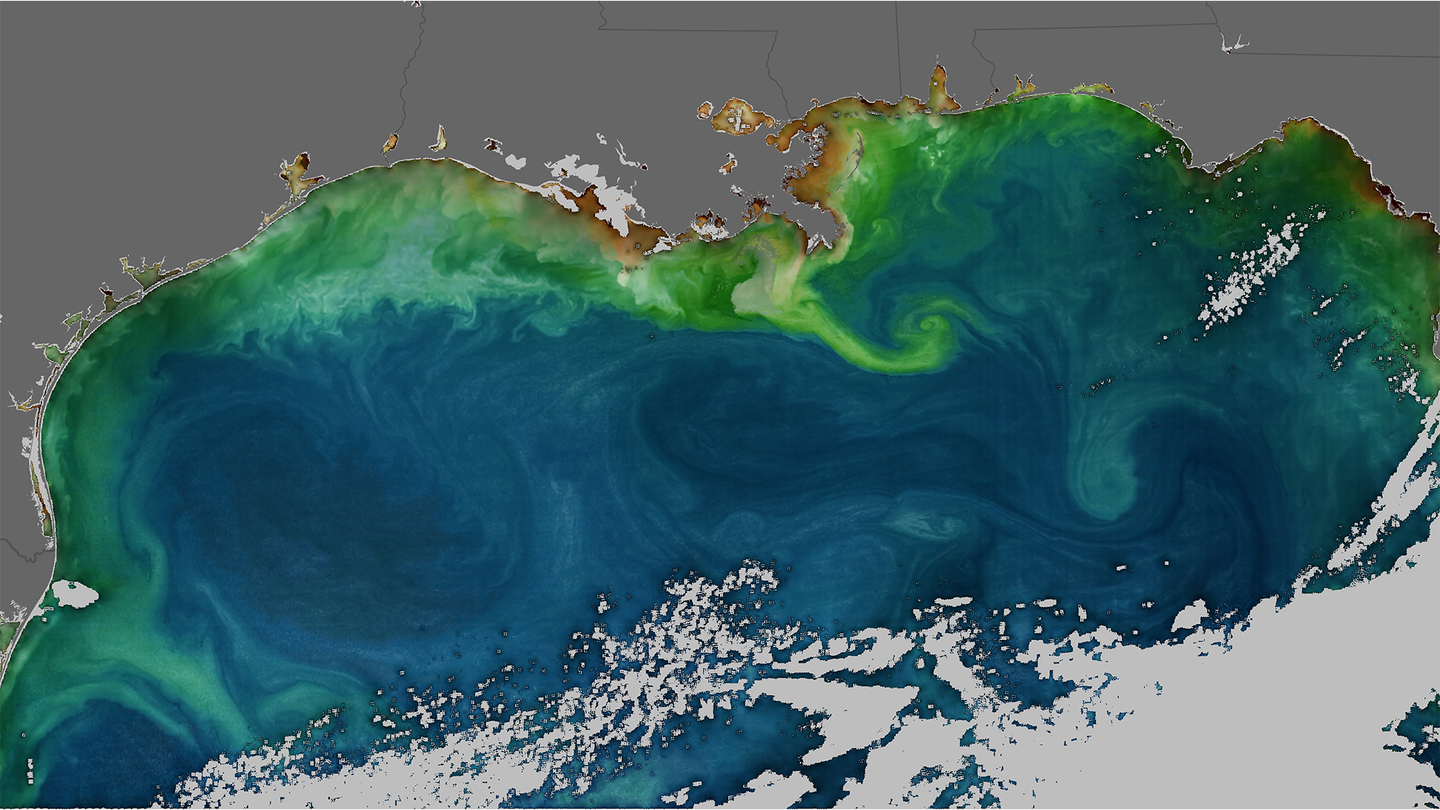Scientists say the ocean is changing color—and it’s probably our fault
The shift in hue could be an indicator of changing conditions at the ocean’s surface.

Climate change is already baking the Earth with record breaking heat, intensifying rain storms, and pushing the planet past eight major indicators of stability. The latest impact of increased greenhouse gas emissions could be changing the color of the world’s oceans.
[Related: A beginner’s guide to the ‘hydrogen rainbow.’]
In a study published July 12 in the journal Nature, an international team of scientists found that the changes and blue-green fluctuations to the ocean’s hue over the last 20 years cannot be explained by the natural year-to-year variability alone. These changes are present in more than 56 percent of the planet’s oceans. The study also found that tropical oceans near the Earth’s equator have become steadily greener overtime.
A shift in ocean color is an indication that ecosystems within the surface may also be changing. While the team can’t point to exactly how marine ecosystems are changing to reflect the shift, they are quite sure that human-induced climate change is likely behind it.
“I’ve been running simulations that have been telling me for years that these changes in ocean color are going to happen,” study co-author and MIT senior research scientist Stephanie Dutkiewicz said in a statement. “To actually see it happening for real is not surprising, but frightening. And these changes are consistent with man-induced changes to our climate.”
The ocean gets its signature colors from what is living in its upper layers. Waters that are a deep blue typically reflect little life, while greener water indicates the presence of ecosystems. Greener water also generally means there is plenty of phytoplankton, the microscopic plant-like microbes that call the upper ocean home and are full of a pigment called chlorophyll.
Phytoplankton are the backbone of the marine food web, and these tiny organisms support everything from tiny krill and fish up to marine mammals and seabirds. They also help the ocean capture and store carbon dioxide. Scientists monitor phytoplankton levels across the ocean’s surface as an indicator of how these essential ocean communities are responding to changes in climate. To keep an eye on it, scientists track changes in chlorophyll that are based on the ratio of how much green versus blue light is reflected from the ocean’s surface. These changes are monitored from space.
A 2010 paper by one of this new study’s co-authors, Stephanie Henson of the National Oceanography Center, found that if scientists were only tracking chlorophyll, it would take at least 30 years of continuous monitoring to detect a trend that was specially being driven by climate change. They argued that this was because large natural variations in chlorophyll that occur year to year would overtake any human-made influence on chlorophyll concentrations.
[Related: Jackrabbit’s color-changing fur may prepare them for climate change.]
A follow-up model in 2019 by Dutkiewicz confirmed that signals that climate change might be driving changes in hue should be easier to detect over the smaller and more normal variation in color and should be apparent within 20 years.
“So I thought, doesn’t it make sense to look for a trend in all these other colors, rather than in chlorophyll alone?” study co-author and bio geoscientist at the National Oceanography Center in the United Kingdom B. B. Cael said in a statement.“It’s worth looking at the whole spectrum, rather than just trying to estimate one number from bits of the spectrum.”
In this new study, the team analyzed measurements of ocean color taken by an instrument aboard the Aqua satellite called the Moderate Resolution Imaging Spectroradiometer (MODIS). True to its name, the Aqua satellite has been monitoring ocean color for 21 years and MODIS takes measurements in seven visible wavelengths, including the two colors that researchers generally use to estimate chlorophyll levels.
Using measurements taken from 2002 to 2022, Cael carried out a statistical analysis using all seven ocean colors. First, he looked at how much these colors changed between regions in a given year, to get a sense of their natural variations. Next, he looked at the bigger picture to see how annual variations in the ocean’s color changed over two decades. The analysis showed a clear trend of above the normal year-to-year variability in color.
To determine if this trend is related to climate change, he looked at the model that Dutkiewicz determined in 2019. This model simulated the Earth’s oceans with the addition of greenhouse gasses and also without it. The model matched up almost exactly with the real-world satellite data–with greenhouse gasses, a change in ocean color will show up within 20 years and occur in about 50 percent of the world’s surface oceans.
The team believes that this new study demonstrates that monitoring the oceans colors beyond green chlorophyll can give a faster and clearer way to detect changes to marine ecosystems.
“The color of the oceans has changed. And we can’t say how. But we can say that changes in color reflect changes in plankton communities that will impact everything that feeds on plankton,” said Dutkiewicz. “It will also change how much the ocean will take up carbon, because different types of plankton have different abilities to do that. So, we hope people take this seriously. It’s not only models that are predicting these changes will happen. We can now see it happening, and the ocean is changing.”
